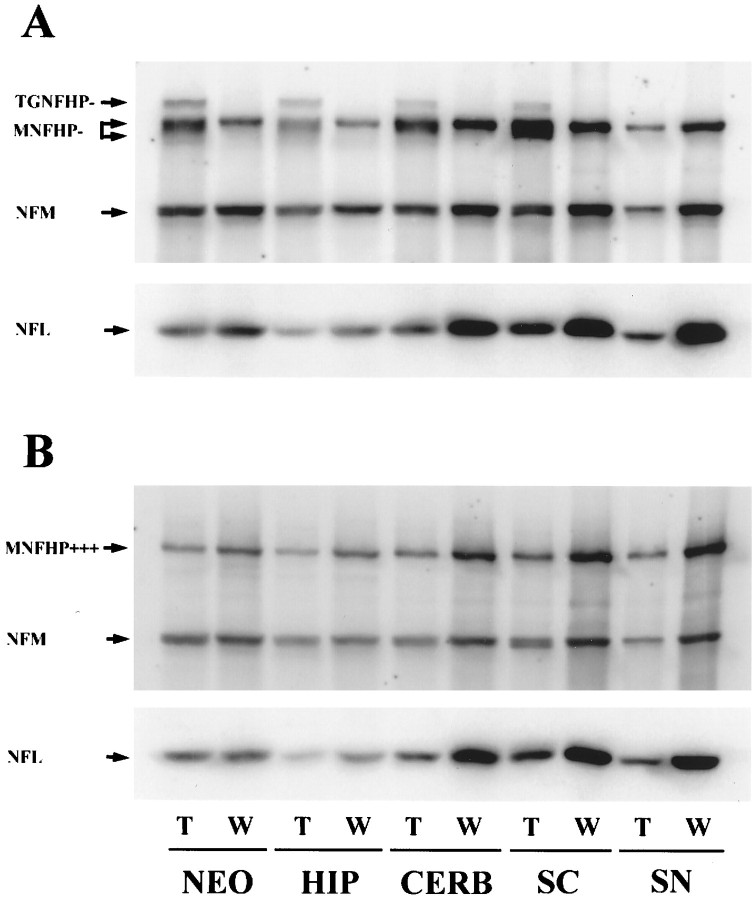Fig. 2.
NF proteins are reduced in 6-month-old 44A NFHLacZ mice. Two pairs of age-matched transgenic and control mice were examined. The transgenic NFHLacZ fusion protein (TGNFH) was detected in all samples containing neuronal cell bodies by RMdO9, an mAb specific for non- and poorly phosphorylated NFH (NFHP−) (A), but not by RMO24, an mAb specific for highly phosphorylated NFH (NFHP+++) (B), suggesting that the TGNFH is poorly or nonphosphorylated. The levels of NFM and NFL are decreased in all nervous system regions of the transgenic mice, as revealed by the decrease in the immunoreactivities of NFM (detected by the RMO189, a phosphorylation-independent NFM mAb) and NFL (detected by the rabbit anti-NFL antiserum). However, the increase in RMdO9 immunoreactivity (A) and the decrease in the RMO24 immunoreactivity (B) of the endogenous mouse NFH (MNFH) suggest that NFH levels may not diminish but that the phosphorylation state of NFH decreases.NEO, Neocortex; HIP, hippocampus;CERB, cerebellum; BS, brainstem;SC, spinal cord; SN, sciatic nerve.

